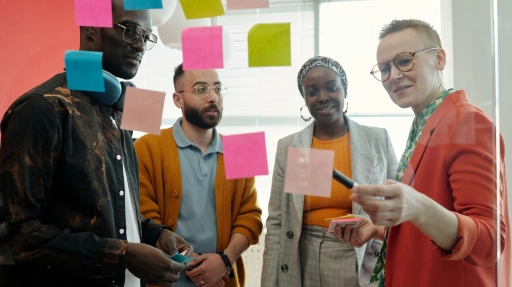Creativity and innovation are crucial for the success and growth of any organization. They drive progress, inspire new ideas, and solve complex problems. However, unlocking creativity in the workplace can be a challenge.
Fortunately, there are strategies that can be implemented to foster innovation and create an environment that nurtures creative thinking.
We will explore some effective strategies for unlocking creativity in the workplace.
Encourage an Open and Supportive Culture
A culture that values and encourages creativity is the foundation for fostering innovation. Create an environment where employees feel comfortable expressing their ideas without fear of judgment or criticism.
Encourage open communication and actively listen to employees’ suggestions and feedback. Celebrate and recognize creativity, and provide support and resources to help employees explore their ideas further.
By fostering a supportive culture, you create the necessary conditions for creativity to thrive.
Foster Cross-Functional Collaboration
Collaboration across different teams and departments can spark fresh perspectives and encourage innovative thinking. Break down silos and encourage employees to work together on projects, allowing them to share their diverse knowledge and experiences.
Promote interdisciplinary collaboration and create opportunities for cross-pollination of ideas. Encouraging teamwork and collaboration not only enhances creativity but also fosters a sense of shared purpose and strengthens relationships within the organization.
Provide Opportunities for Learning and Development
Continuous learning and development are vital for unlocking creativity. Offer training programs, workshops, and seminars that focus on creativity, innovation, and problem-solving skills.
Encourage employees to pursue personal and professional growth by providing resources and support for them to attend conferences or enroll in courses related to their areas of interest.
By investing in their development, you empower employees to expand their knowledge and skills, which in turn fuels their creative potential.
Embrace Diversity and Inclusion

Diversity and inclusion are powerful catalysts for creativity and innovation. Create a diverse workforce that encompasses individuals from different backgrounds, cultures, and perspectives.
Embrace diversity not only in terms of demographics but also in terms of skill sets and ways of thinking. Encourage employees to share their unique perspectives and actively seek out diverse viewpoints when problem-solving.
By embracing diversity and inclusion, you foster an environment where a wide range of ideas can flourish.
Foster a Risk-Tolerant Environment
Creativity often involves taking risks and stepping outside of one’s comfort zone. Foster a culture that embraces calculated risks and encourages experimentation. Provide employees with the freedom to explore unconventional ideas and approaches without fear of failure or repercussions.
Encourage learning from mistakes and view failures as opportunities for growth and innovation. By fostering a risk-tolerant environment, you empower employees to push boundaries and unlock their creative potential.
Allow Time for Reflection and Solitude
Constant busyness and a packed schedule can stifle creativity. Encourage employees to take breaks and provide dedicated time for reflection and solitude. These moments of quiet contemplation allow ideas to percolate, insights to emerge, and connections to form.
Provide spaces where employees can retreat and engage in activities that promote relaxation and creative thinking, such as meditation rooms or quiet areas. By valuing and promoting reflection and solitude, you create an environment conducive to innovative thinking.
Encourage Playfulness and Experimentation
Playfulness and experimentation are integral to the creative process. Encourage employees to engage in activities that spark joy, such as brainstorming sessions, ideation games, or design thinking exercises.
Create designated spaces or times for employees to experiment with new ideas without the pressure of immediate outcomes or deliverables.
By incorporating playfulness and experimentation into the work environment, you stimulate creativity and encourage innovative thinking.
Conclusion
Fostering a culture of creativity and innovation in the workplace requires a deliberate and multifaceted approach.
By embracing an open and supportive culture, promoting cross-functional collaboration, providing opportunities for learning and development, embracing diversity and inclusion, fostering a risk-tolerant environment, allowing time for reflection and solitude, and encouraging playfulness and experimentation, organizations can unlock the full potential of their employees’ creativity.
By implementing these strategies, organizations can foster an environment where innovation thrives, leading to improved problem-solving, increased competitiveness, and long-term success.




